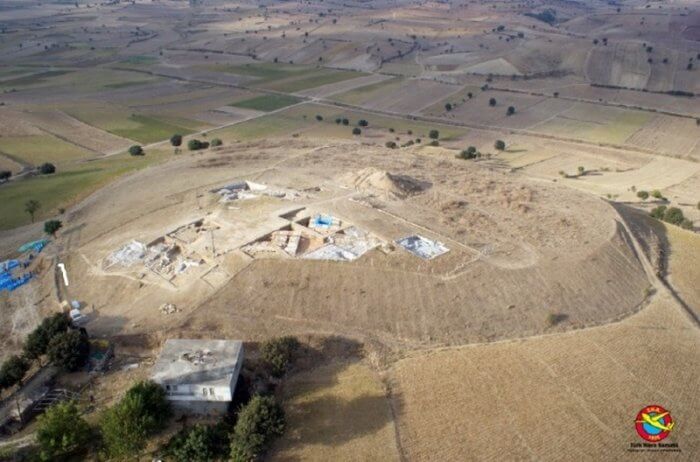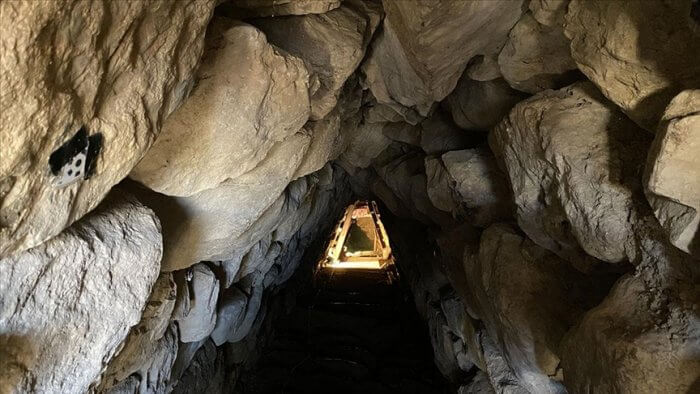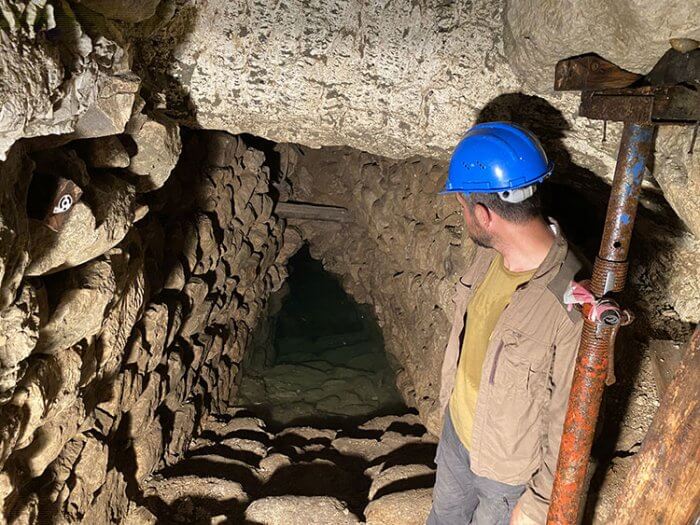
3,000-Year-Old Wooden Structure Found In Hittite Tunnel Mentioned On Cuneiform Tablets
The Hittites were an ancient Anatolian (modern-day Turkey) people who formed an empire between 1600-1180 BCE. The Hittites manufactured advanced iron goods, ruled over their kingdom through government officials with independent authority over various branches of government, and worshipped storm gods.
By: Jan Bartek | Ancient Pages
Archaeologists have discovered 3,000-year-old wood structures in a deep and long tunnel used by the ancient Hittite Civilization.
One of the most fascinating aspects of this discovery is that the tunnel is mentioned on ancient cuneiform tablets.
Scientists have been excavating the 8-meter-deep, 22-meter-long tunnel at Oymaağaç Tumulus in the Hittite city of Nerik in the Vezirköprü district of Samsun. Turkey since 2009. Over the years, many intriguing ancient objects have been recovered from the site. Among them are “a previously unknown group of Late Bronze Age painted pottery, which obviously existed besides the dominating Hittite pottery.”
The “ceramic group belonged to an independent regional pottery tradition of the Central Black Sea region and it is likely that it can be associated with the so-called Kaška people.”
Mpuluzi Batholith: A 200-Million-Year-Old ‘Giant’ Footprint Discovered In South Africa
During the latest excavations, archaeologists got inside the mound, descended 52 steps and examined the ancient tunnel.

One of the most important finds is the spring at the end of the tunnel.
“The spring at the end of the tunnel is mentioned in the cuneiform texts during the Hittite period as the spring that the air god loved very much. There is water at the end of the tunnel, as you can see. This water is high now. During the Hittite period, water flowed more regularly from a gutter. We can say that it was an important source of water for the Hittites, especially for their rituals,” Uşak University Archaeology Department Lecturer and Deputy Head of Carvings Assoc. Dr. Mehmet Ali Yılmaz told Anadolu Agency (AA).

The wooden structures found by archaeologists were in water and mud. The purpose of the wooden structures is yet unknown.
They may have been deliberately placed there by the Hittites, but for what reason cannot yet be said. Maybe they were part of some installation connected to the spring.
It is something scientists will examine by setting up three-dimensional models.
What is known is that the wooden structures found in the water in the tunnel were recorded in the literature as extremely important.
“The radiocarbon dates of these wooden finds pointed to the Iron Age. In other words, these woods date to the end of the 10th century BC and are 3,000 years old,” Assoc. Dr. Mehmet Ali Yılmaz added.
* * *
NEXT UP!
Drought Reveals 113-Million-Year-Old Dinosaur Tracks In Texas
Drought has dried up part of a river in central Texas, revealing 113-million-year-old dinosaur tracks.
The prehistoric footprints emerged at Dinosaur Valley State Park, which is located in the town of Glen Rose, southwest of the Dallas-Fort Worth area.
As the name suggests, the park already protects other dinosaur footprints. But the tracks that recently emerged are usually hidden under the mud, silt and waters of the Paluxy River. This summer, however, water levels have dipped so low that the prehistoric indentations are now visible. So far, volunteers have counted 75 newly exposed footprints in the parched riverbed.
* * *
READ MORE: This Ancient Maya City Was Hidden In The Jungle For More Than 1,000 Years
And more Archaeology News: Guanches: Ancient Mummies of The Canary Islands (Video)
Liked it? Take a second to support Collective Spark.
We’d love to hear from you! If you have a comment about this article or if you have a tip for a future Collective Spark Story please let us know below in the comment section.
